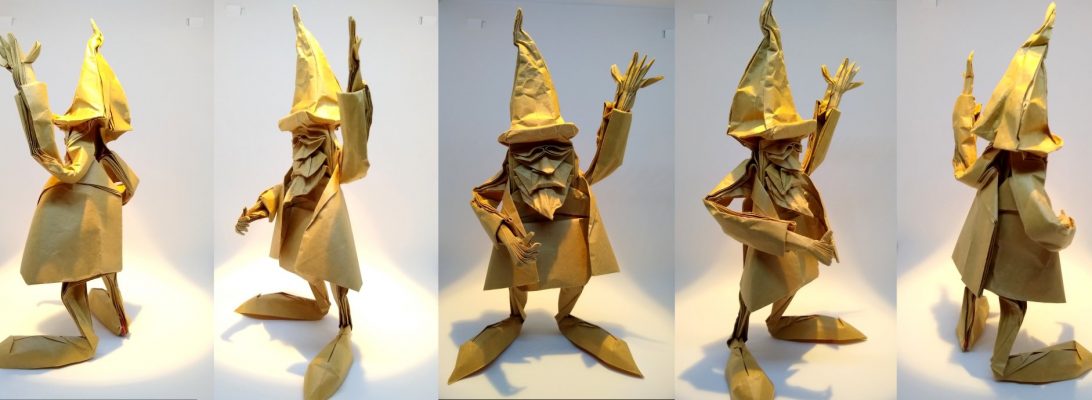When asked to be part of the Papermakers and Artists QLD “On A Roll” Gallery exhibit, my first thoughts of a “scroll-like” object I could make was always going to be something relating to my current passion – Mulberry paper – Kozo.

I had, in previous posts, explored the harvesting and cleaning, beating and use of White Mulberry and Paper Mulberry pulp from twig to finished sheet. A consequence of processing a sheath of White mulberry was a collection of lovely white sticks without their bark. Experimenting what I could do with them, I discovered they accepted soft graphite pencil really well.

A scroll, to me, tells a story. Story telling is something that humans have always done, ever since they evolved the ability to communicate. Lots of cultures evolved oral traditions (spoken word), more developed repeatable symbology that evolved into alphabets and written communications. I was determined to explore ancient and modern story telling, with the idea that “Once upon a time” was a concept that has begun every story, in one form or another.
I began collecting different representations of the concept of “once upon a time”, and included Arabic, Burmese, Cantonese, English, Greek, Hebrew, Hindi, Japanese, Khmer, Korean, Lao, Maori, Mongolian, Nepali, Persian, Punjab, Sanskrit, Tamil, Thai, Tibetan, Urdu, Yiddish scripts that expressed this concept. Using a soft pencil, I transcribed (as faithfully as I could) these scripts, one per stick onto the twig bundle – interesting some used left to right, others right to left.

I had this idea that a scroll, made from hand-poured Kozo pulp could enclose/enrobe the sticks and make a structure that was strong and stable. I made a “proof of concept” piece as a PAQ hands-on paper activity day and knew the idea had legs. My son in law and I then poached a thicker stick from a neighbors out of control mulberry tree to act as a “hanger”, stripped the bark off it, let it dry and I had all the bits and bobs I needed to make the piece.

Digging into my stash of pulps, I selected a 300g (dry weight) bag of Paper Mulberry pulp I had beaten and dried earlier. Over a period of 3 days I put it through 3 separate hand-beatings using my Andymallet. After each beating, I carefully washed and squeezed it dry to rinse it to the point where it was fairly white. Using my electric drill and a large paint-mixer attachment I then agitated the pulp in a large deep bucket to further fluff it up and separate it. I added the strained juice of soaked cut up okra as a mucilage to aid in suspending the pulp in the water.

Using timber stockpiled in the rafters under the house I made a custom mould about 1.5m x 800mm wide, covered it with fly wire and then lined the top with some black organza which was all clamped down.

Using a rectangular plastic container I gently ladled the rough shape of the piece onto the organza, then laid out the sticks, then adjusted them time and time again until I was happy with the composition and distribution. Using red cotton thread, I laid “veins” tied to the hanger down the length of the piece, and then wove them under and over, in random ways to hint at “bloodlines” – that which ties together all of humankind. The added benefit of the cotton bloodlines was they will provide additional hanging strength as they are tied to the hanger.

Carefully, I finished ladling the pulp to make the piece surround parts of each twig, fill in the gaps, form a feathered edge and grip onto the hanger stick. I have no idea how long this took, time seemed to just go away. I had started in the morning, emerged from the wet area in the afternoon. I covered it gently to prevent dust settling on it, and let it drip dry overnight. Next morning the frame was brought inside to dry slowly. The pulp gripped to the organza and allowed me to “resist dry” it slowly without shrinkage or buckling (must remember this trick, so much easier to peel than glass).
After 4 full days drying, I was able to peel the sculpture off and tidy any strange bits with a small paintbrush and water. I have a concept for hanging it – I need to acquire some natural cotton cord that will then be frapped onto the hanger stick, creating a hanging loop for display.

I made a foam core roller encased in a bubble wrap strip to roll up, transport and store this “sticky” scroll in a safe, stable rolled-up form, but this piece is designed to be displayed hanging, unfurled.

I find it immensely satisfying to have an idea in my head and then manifest that idea fairly faithfully. It happens rarely but this is one such creative project. I hope it will be a worthy addition to the PAQ “On A Roll – A contemporary exploration of the scroll” exhibition, soon to be in Ipswich and Caboolture regional galleries. All very exciting.

